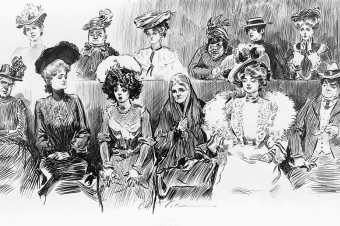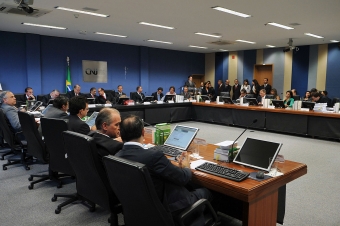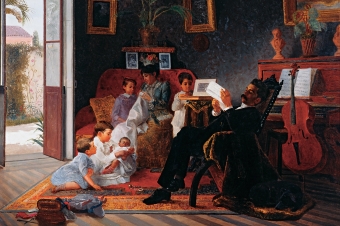Summary:
The freshmen from the 1st period made a research about the Jury Court procedure and also a previous reading of the classic literacy work to use it as a script to the simulated jury.
Objective:
- SPECIFIC GOALS: This activity is inserted in the course’s objective, within its perspective of graduate professionals with a critical position, it has an active participation during the learning process and academic literacy. Additionally, it is an interdisciplinary work, and it will analyze contents of the Introductory Law Study, Philosophy, Language and Argumentation, Political Science and Penal Procedural Law classes.
- DEVELOPED ABILITIES: It was intended to develop the text interpretation, legal argumentation, and criticism capacities.
Dynamics:
- TEACHING METHOD: critical reading, academic literacy, and problem-based learning
- REQUIREMENTS: In relation to students, the preparation consisted in the reading of the literary work “Tempo de Matar”, and at the theme discussion the thesis to be defended. Also, they realized the wide research activity about the theme and the procedure of the Jury Court, including the session visits. Finally, during the semester students got together in the classroom and out of it to elaborate the actor’s Jury Court speeches. Schematically, these were the students’ attributions:
• Study the work “Tempo de Matar”, written by John Grisham.
• Research the popular judgement and related themes for work sustention.
• Build a theatrical play that includes the character judgement.
In relation to the professors, the beginning of the semester served to have faculty meetings to decide the literacy work that would be used – “Tempo de Matar” by John Grisham (edited by Rocco) – and also the script text that should be followed by the students. Schematically, these were the professors’ attributions:
• provide a period, in their week schedule, for group orientation;
• help at the group division and indicate the place and presentation date;
• strengthen the interdisciplinary character of the respective period, informing about which classes were being included;
• make orientation about the methodology;
• direct the ideas ordering inside the work development, stimulating the student to produce the knowledge all the time, inside the building process of the integrated work;
• evaluate the work building process.
- DEVELOPMENT OF THE DYNAMICS: the dynamic was developed in four stages:
1st stage: August
- Interdisciplinary work discussion with the manager of the Law Course, professor Ines Campolina, and with the first period professors, defining the literacy work that would be used and the dates to work achievement;
- Work presentation to students, explaining about the interdisciplinary importance, and also the stimulus to the technical visit achievement to the Augusto de Lima Forum in Nova Lima – Minas Gerais, to watch a Jury Court judgment.
2nd stage: September:
- Reading of the established work literacy, made by the students.
- Technical visit to the Augusto de Lima Forum, Bernadino Lima Park – Downtown, Nova Lima – Minas Gerais, to watch a judgement followed by professors Liciane Gonçalves and Carla Cristina.
3rd stage: October:
- Group meetings to elaborate the defense and indictment theatrical script and organization for the work presentation. From here, the class was divided in 4 or 5 groups:
1- indictment: maximum of seven components, only one act inside the theatrical play, the rest were assistants and researchers;
2- defense: maximum of seven components, only one act inside the theatrical play, the rest were assistants and researchers;
3- judges body: maximum of five components, only one act inside the theatrical play, the rest were assistants and researchers;
4- jurors: maximum of twenty-one and minimum seven;
5- people: all the rest of the students (only if there is no space in the groups) act as a help body group for the active ones.
The groups should develop their researches and argumentation according to the task to be performed.
4th stage: November:
- Work presentation for the first period professors (examination Board);
- Board work evaluation:
- Reflection about what was learned with the work achievement;
- Reflection about work importance for the formation and Law Course students’ preparation;
- Reflection about teamwork, presentation of advantages and difficulties found;
- Reflection about the interdisciplinary work importance aiming the identification between the relationships of classes’ period.
Evaluation:
- GRADE EDUCATION: The activity had an evaluative character as an interdisciplinary work. These were the evaluated items: theatrical play planning, execution, case contextualization, members’ involvement and creativity.







